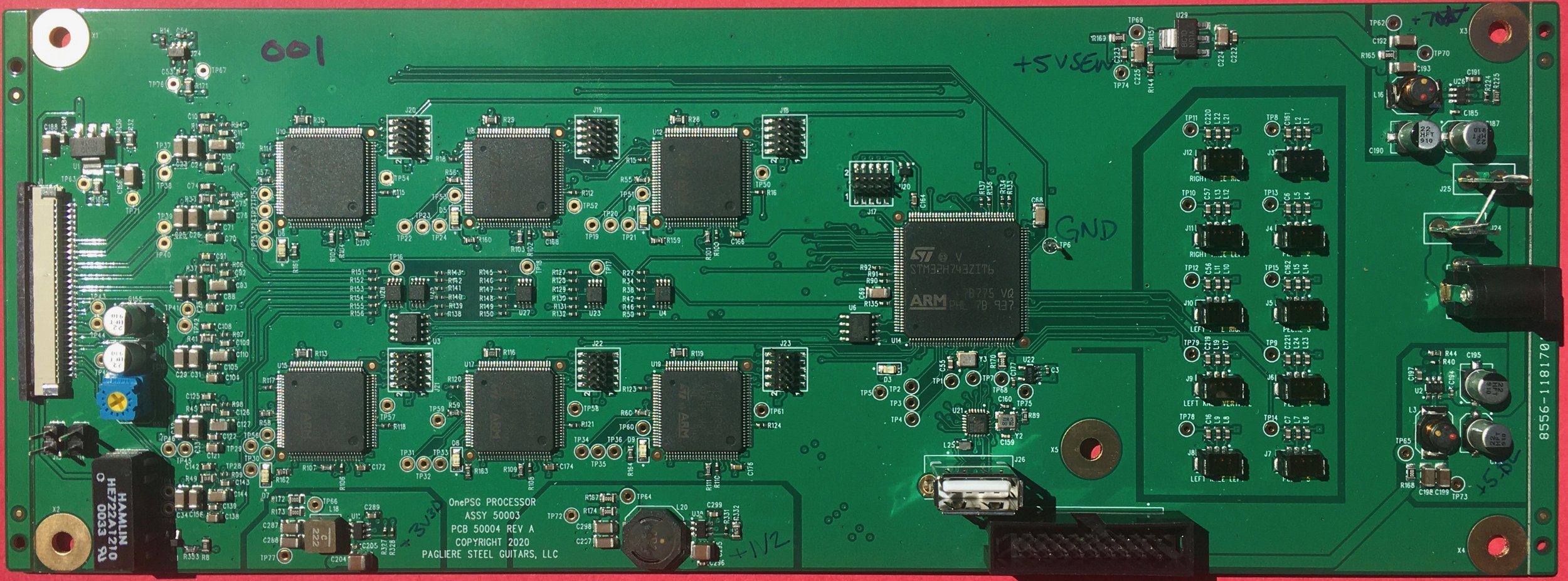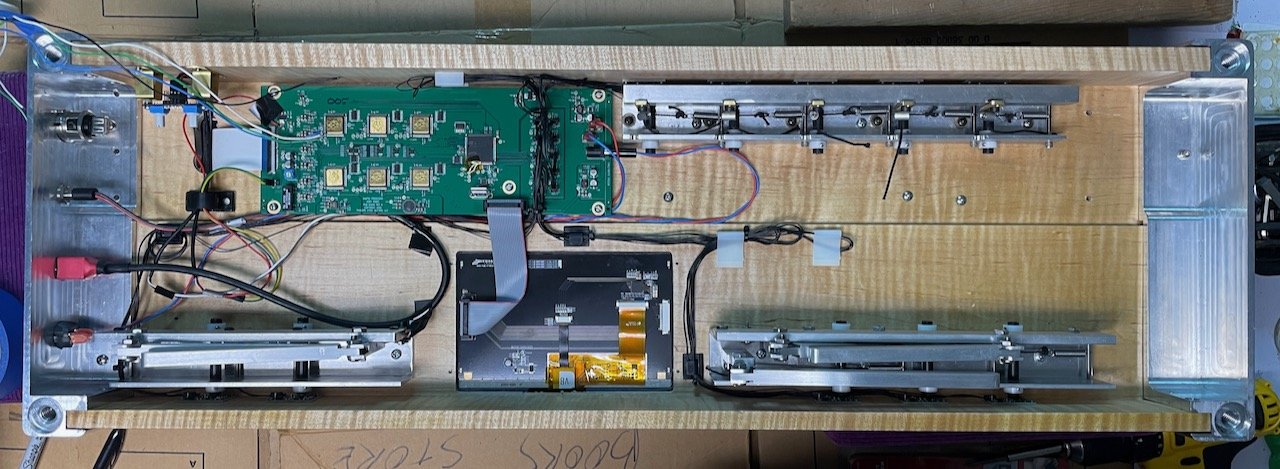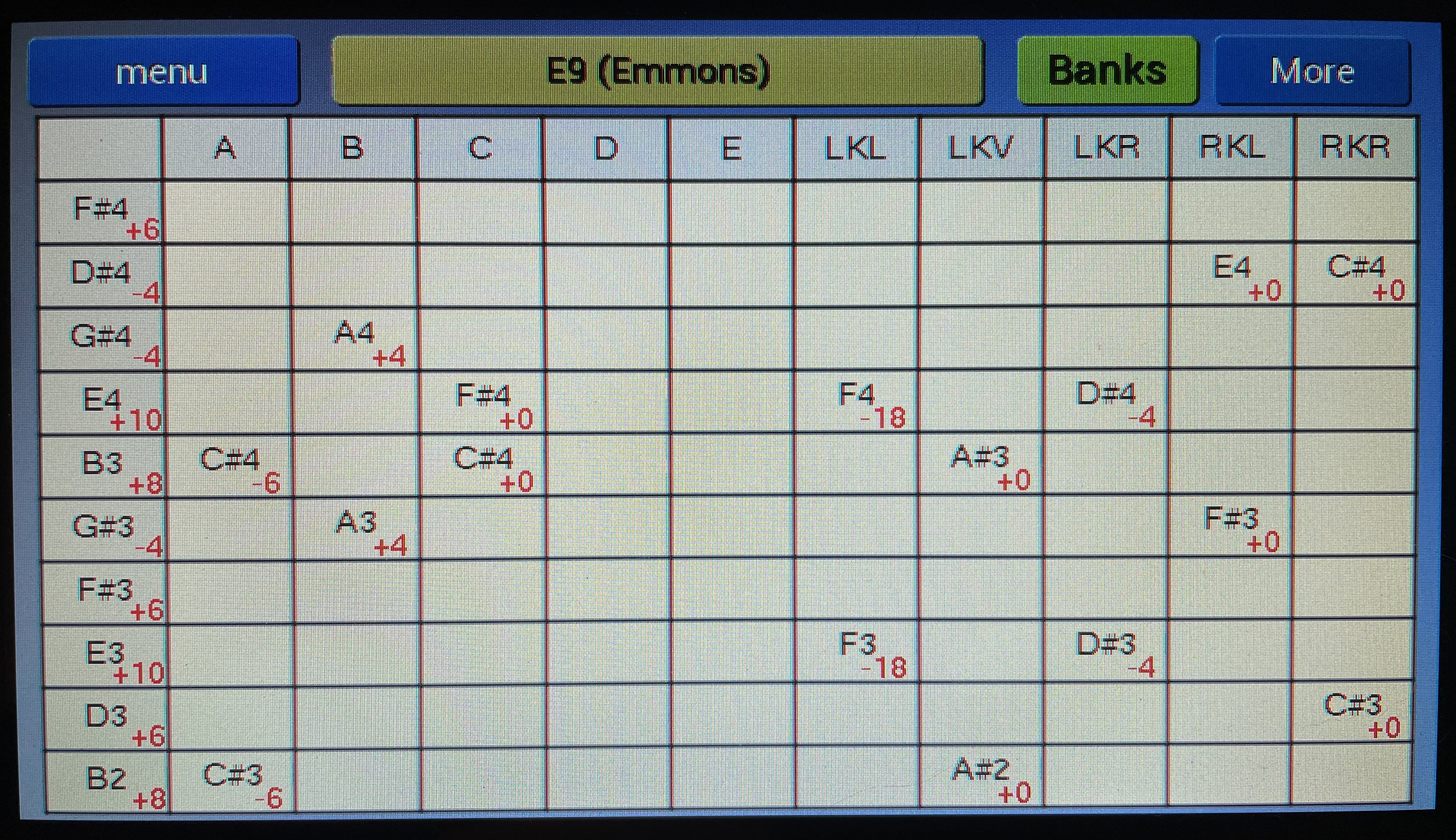Revolutions in
Pedal Steel Guitar History
The design and workings of the Traditional Pedal Steel Guitar (TPSG) have remained essentially unchanged for 50 years. Players have learned to live with its quirks and limitations. However, there have been musical revolutions in the instrument.
Revolution 1: Pedals are added to a steel guitar to change from one open tuning to another. Who needs a console steel with four necks anymore?
Revolution 2: In 1954, on Web Pierce's Slowly, Bud Isaacs uses a pedal, not to change the tuning, but to change the pitches of two strings as part of the melody. Minds are blown!
Revolution 3: Buddy Emmons splits Bud Isaacs’ one pedal into two, each affecting only one string. It separates the two "voices" and expands the musical potential of the pedal steel. Everyone changes their pedal setup to follow suit. (Buddy would also later add the so-called chromatic strings and several mechanical innovations.)
Revolution 4: Lloyd Green adds the F raise to open up another vista for the PSG. The change is first recorded in 1968, on D-I-V-O-R-C-E by Tammy Wynette. Of course the F change becomes part of the standard E9 tuning.
At each step, some limitations inherent in the mechanical or musical design of the instrument were eliminated and its potential expanded. For example, its early design allowed only one or two raises or lowers per string. The styles of music generally played on the pedal steel and the state of the art of the mechanical design of the instrument led to two particular tunings. Therefore, many TPSGs were, and still are, built with two necks.
Later, as triple changes per string were possible, the Universal evolved, wherein one physical neck of 12 strings merged the E9 and B6 tunings to provide the functionality of both standard tunings (Maurice Anderson and Bill Keith were proponents of the Universal.). Nevertheless, many players continue to play double-neck guitars.
Though the design of modern PSGs has improved some limitations, the instrument’s weight, mechanical complexity, difficulty in modifications and maintenance have remained.
Several years ago, Frank Carter, builder of the innovative Infinity Pedal Steel Guitar said, "Mechanically, the pedal steel guitar has gone as far as it can go."
Revolution 5: the OnePSG. Read about : the "Fly By Wire” design of the OnePSG. This design is not as revolutionary in the mechanical/electronic sense as it is for the what the design brings: new ways to approach the Pedal Steel Guitar musically.
Number of Necks : Instant Copedent Changes
The current prototypes of the OnePSG have one (physical) neck of 10 strings*, five pedals, and five knee levers (though the design does allow for the addition of mores strings, pedals, and levers in future models). However, the OnePSG effectively has an unlimited number of necks / copedents.
Video: Introduction to the OnePSG Alpha Prototype from October, 2021, showing just a few of the OnePSG’s features: instantly swapping copedents, capo-ing, and editing copedents in seconds (aka “virtual re-rodding”).
Imagine a backline with a pedal steel! Anyone can sit at it and have their own personal copedent in seconds.
* The design of the OnePSG also allows for 12-string versions.
OnePSG Alpha Prototype printed circuit board
Weight
A traditional PSG is usually built of wood and lots of metal which means it can be quite heavy. Typical single-neck and double-neck PSGs can weigh up to 65 pounds, and of course more with a case.
Other than the pedals and knee levers themselves, the OnePSG has essentially no moving parts. It has no pullrods or bell cranks. There are no changers.
Imagine tossing your light-weight pedal steel into the overhead on a plane. You know, that pedal steel with the hundreds of necks.
Underside of the OnePSG Alpha Prototype, Note the very short cross rods in aluminum channels, and the too long cables. All that will be designed away in the Beta Prototype.
No Compensators
On a traditional PSG, when two pedals or levers, which individually affect the same string, are engaged simultaneously, the changes can interact to reach some intermediate note. If you’re lucky, the final note is close to in tune! Usually you’re not. Sometimes, to tweak these “splits” or to just “temper” some string’s pitch that isn’t directly altered by a pedal/lever change but needs to sound more in tune with other changes, “compensators” are added. A compensator is just another bellcrank, pull rod, etc. This makes the PSG yet more complicated, adds weight, and means more work when making adjustments to the instrument.
The OnePSG has no need for compensators.
Imagine splits on any string that are always in tune.
Copedent view with sweetened values display enabled.
Copedent and Temperament
Tuning a PSG involves tuning the open strings and then "tuning" the pedals and knee levers which involves adjusting nylon nuts at the changer end. It can be a tricky business, getting and keeping all the changes in tune.
Imagine pedals and knee levers that stay precisely at the pitch intervals you set them to.
Imagine capoing up ... or even down ... any number of frets.
Imagine being able to sweeten every open string and pedal/lever change.
Imagine simply adjusting all your strings and changes, all at once, any number of cents up or down (e.g., to be able to play with other instruments that are slightly sharp or flat).



